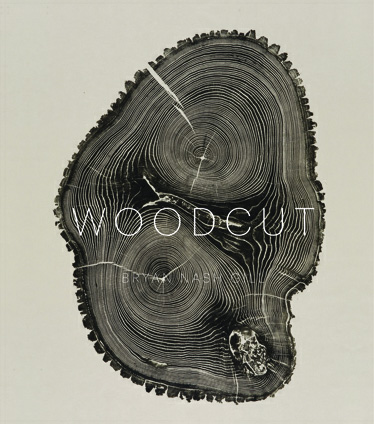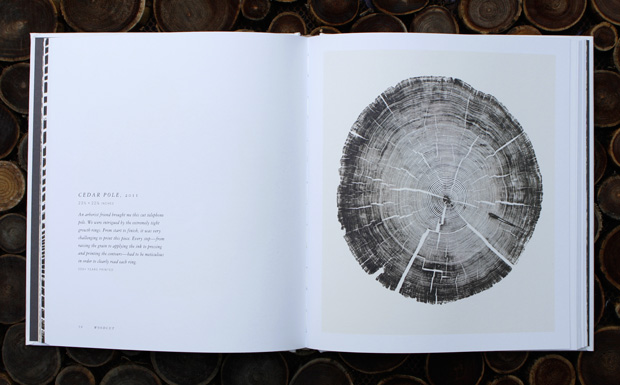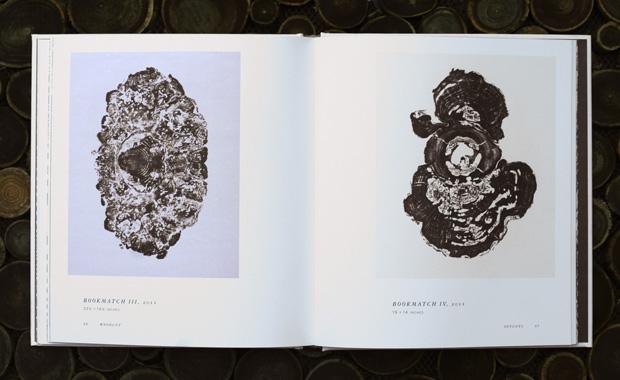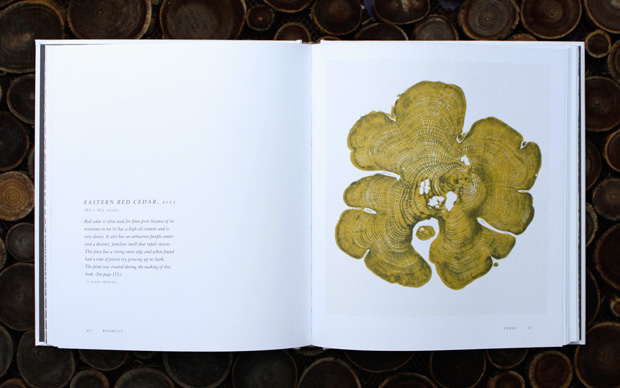ORIGINAL: Brain Pickings
by Maria Popova
Bryan Nash Gill’s visual record of the passage of time.
Trees have a way of witnessing the world that stirs our deepest sense of permanence and impermanence . Somewhere between Cedric Pollet’s Bark and Romeyn Houghs’s cross-section plates comes Bryan Nash Gill’ s Woodcut ( public library ) — a magnificent collection of the artist’s large-scale relief prints from the cross-sections of fallen and damaged trees.
Gills’ ink prints — sometimes stark, sometimes nuanced, always exquisitely beautiful — provide another, at once more abstract and more organic, way to visualize time , his labor-intensive printmaking process mirroring the patience imprinted on the trees’ arboreal rings. Looking at the cross-sections from above, inverting one’s usual orientation relative to a tree, kindles a kind of transcendental awe at these radial life records.
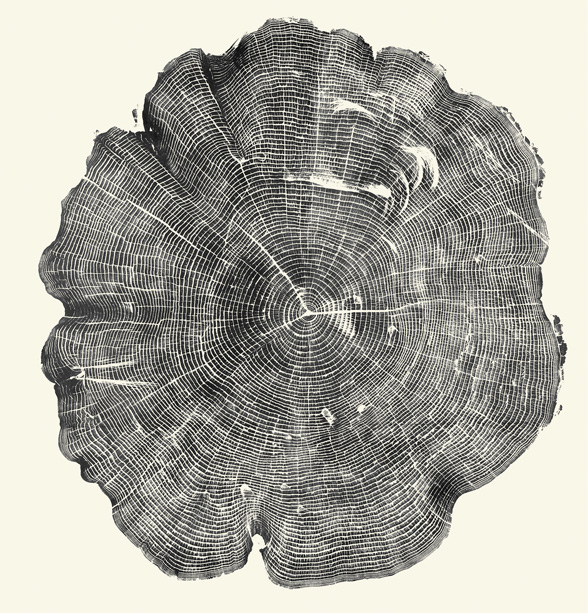 |
| Ash, 2003. 82 years printed |
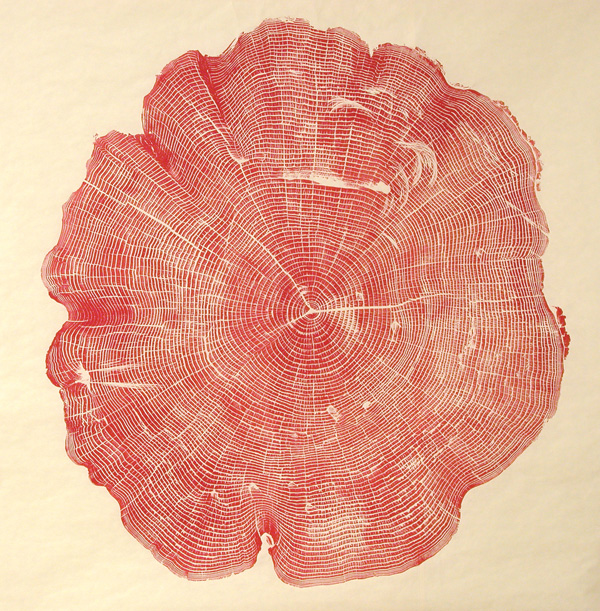 |
| Red Ash, 2007. 82 years printed |
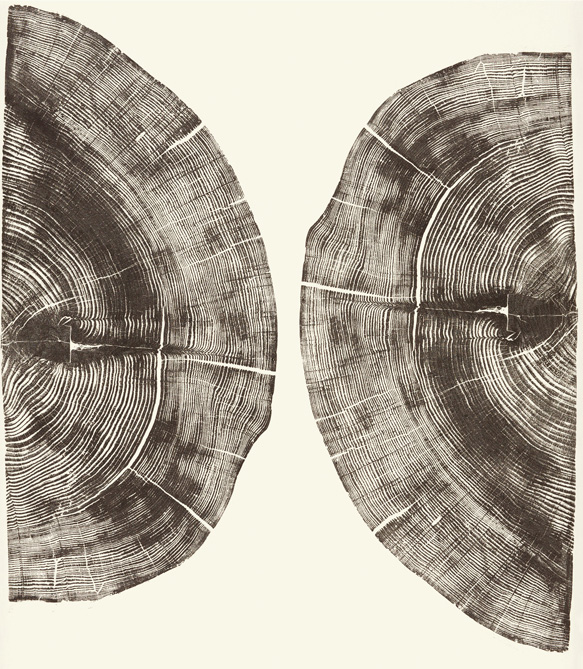 |
| Double Crescent, 2009. Norway spruce. 45 years printed |
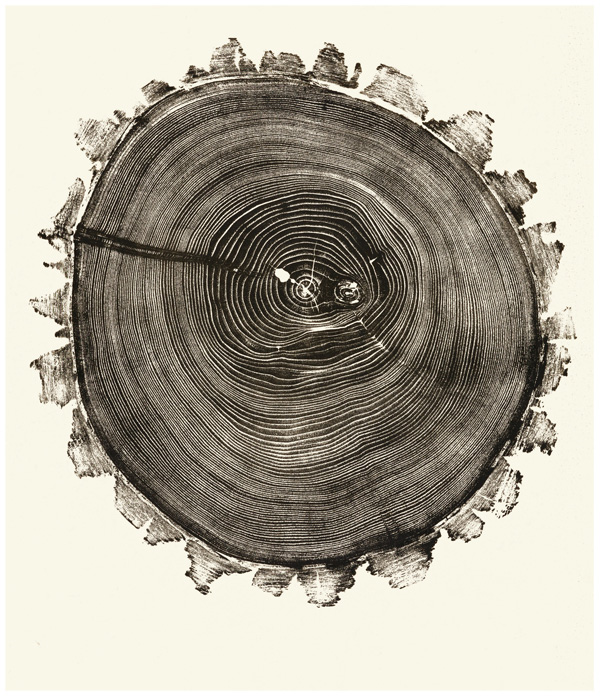 |
Black Locust with Bark, 2009. 87 years printed
|
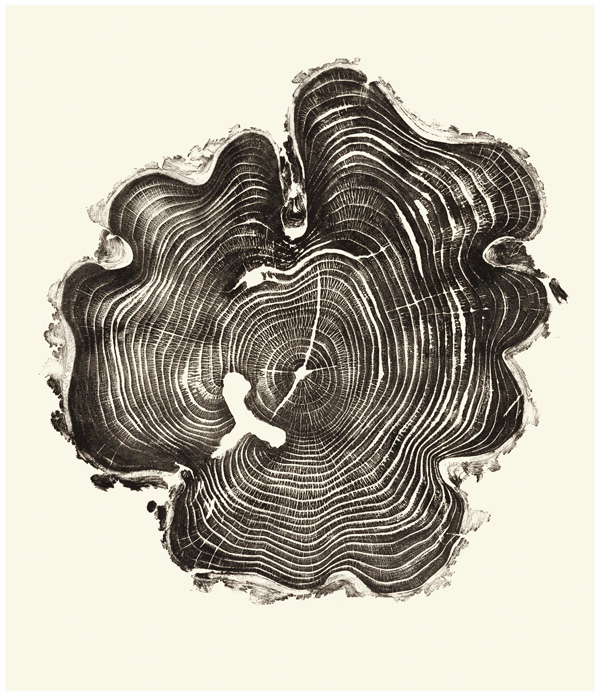 |
| Honey Locust, 2010. 31 years printed |
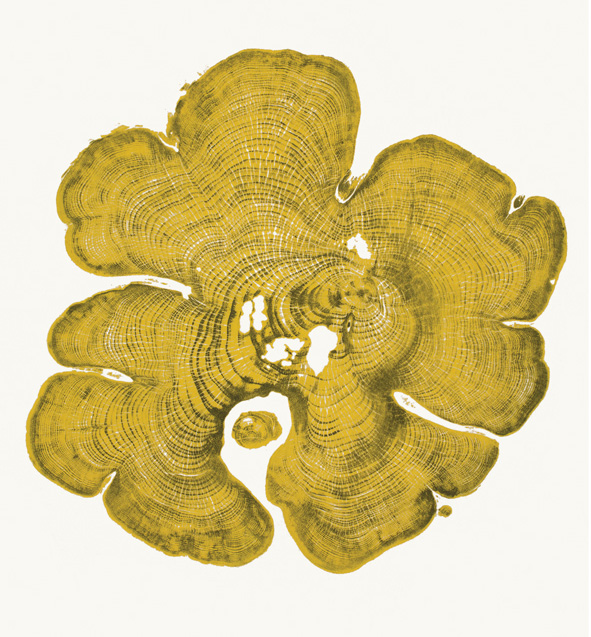 |
| Eastern Red Cedar, 2011. 77 years printed |
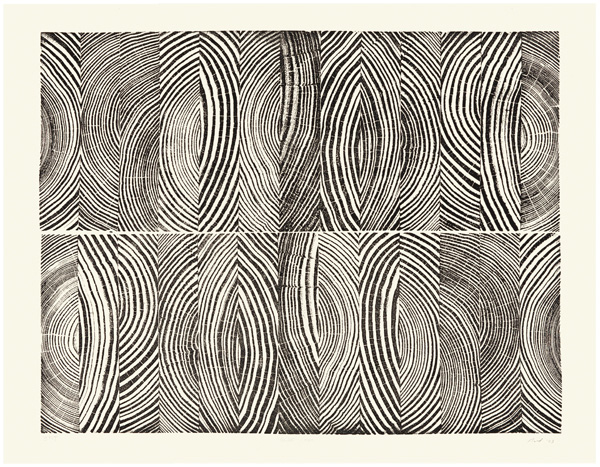 |
| Glue Lam, 2003 |
One of Gill's first prints created from dimensional lumber. Glued laminated timber is known for its superior structural strength and used in columns and beams. This print, revealing the grain patterns of glued lumber, is made from two boards stacked and rotated.
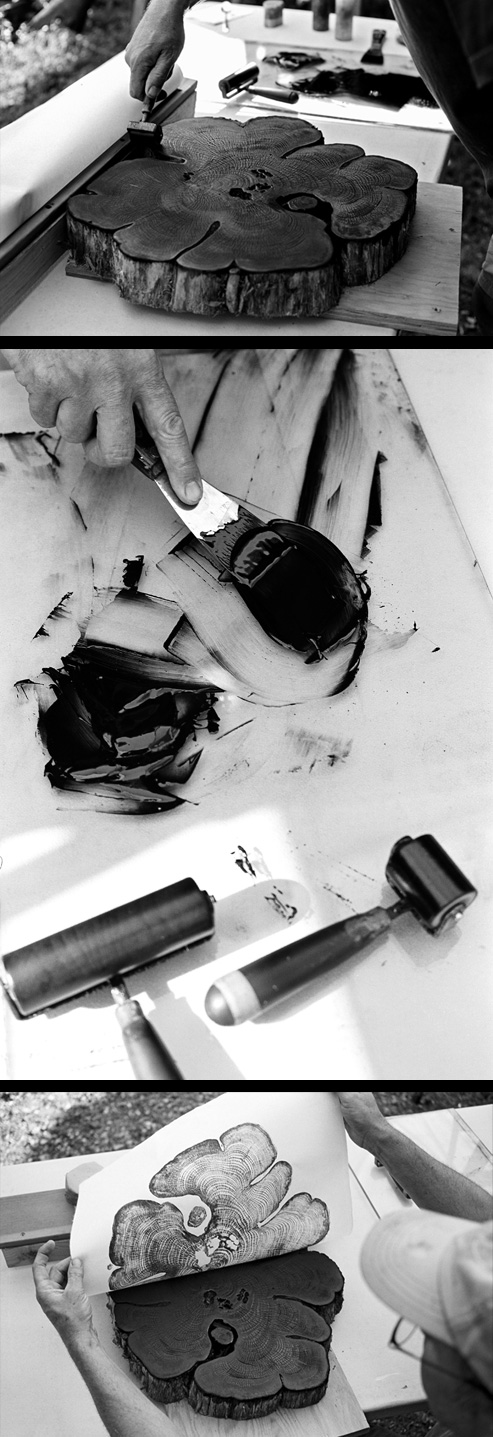 |
| Gill at work, inking the block and printing (pressing the rings) of Eastern Red Cedar |
Nature writer Verlyn Klinkenborg observes in the foreword:
Something [happens] as you peer into these boles. They confound time, simultaneously offering diachrony and synchrony, to use those nearly antiquated words. You look across all of the tree’s living years, exposed at one. And yet, as you move from the center to the periphery — to the final present of that individual tree — you’re also looking alongtime, along the succession of growth cycles that end in what is, after all, the death mask of a plant, the sustained rigor mortis of a maple, ash, spruce, locust, and other species.
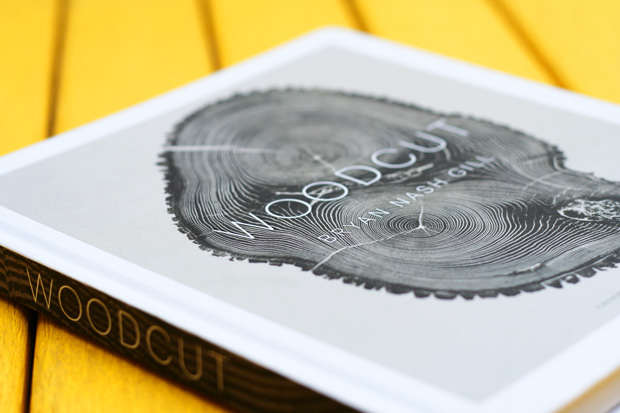 |
| Woodcut |
Beautiful and quietly poetic, Woodcut is an absolute treat both aesthetically and conceptually, pulling you into a deeper contemplation of the passage of time as it sweeps you up in a meditation on beauty.
Captioned images courtesy of Princeton Architectural Press / Bryan Nash Gill

